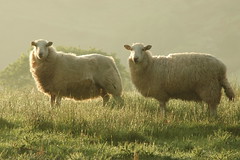I got on the topic of eco-friendly fabrics (e.g., organic cotton, bamboo, lyocell, hemp, kenaf) and before I knew it, hours had gone by. Although I can’t say I’m an expert by any means, I feel like I learned a lot about these fabrics.
Bamboo
I learned that the FTC is trying to get clothing manufacturers to label the fabric made from bamboo correctly. On the label, it should be called rayon made from bamboo, although this article talked about how there are questionable practices in using bamboo for fabric (among other interesting topics that she covered). However, certain bamboo fabrics (as certified free of chemicals by Oeko-Tex or GOTS) are much more sustainable than fabric like regular cotton. Here’s more information about bamboo.
Hemp
Hemp is a non-narcotic of the same family as marijuana and that is why it’s not allowed to be grown legally in the US. It has been grown in the US before however –both George Washington and Thomas Jefferson grew hemp. Hemp is pretty easily wrinkled and can be scratchy by itself so it needs to be blended with other fabrics. It is super strong and durable though. Hemp fabric holds its shape much better than a lot of eco-friendly fabric out there, meaning it won't stretch over time. It’s one of the most eco-friendly fibers because 1) it grows super fast, 2) can grow higher amounts on the same acreage as other fibers, 3) helps stop soil erosion, 4) it doesn’t exhaust the land, and 5) it’s drought tolerant.
In my research, I read about a really cool green designer who’s trying to change the practices in clothing factories and the materials that are used. If you'd like more random info about hemp, check this out.
Lyocell
This relatively unknown fabric is made from wood pulp. It’s generic name is Tencel© and it’s technically rayon. There are lots of reasons it’s a good fabric to use: 1) Strong and durable, 2) Breathable, absorbent, generally comfortable to wear, and 3) it’s biodegradable. One of the best reasons to look for this fabric is that the US firm that produces it uses a sustainable closed-loop system, meaning the textile is created using renewable energy without creating pollution or waste, and the materials to produce it were recycle and reused. The downsides to this fabric are that it is hard to find; it wrinkles (although less than linen); and can shrink and fade (especially if dyed naturally). Also, it’s pretty expensive because producing it is expensive – I saw a Queen sheet set going for $150 online. Here’s more reading on this fiber.
Kenaf
This is the article that spurred on this tangent of mine. I had never heard of kenaf before, but apparently, it’s been around for thousands of years. It’s got a variety of uses – paper, ropes, and fabrics. Toyota even uses it for organic interior parts! It's still pretty hard to find though, but I'm going to keep looking for it in the future.
Organic Cotton
Organic cotton is expensive, but it does not use pesticides or genetically modified seeds. However, it can use more water at the start; dyes can be chemically-based (rather than low-impact or natural dyes); and it usually is shipped around the world to get to you, which is a big waste of energy and fuel. There's a great article about organic vs. conventional cotton on the Gaiam Life website.
Now, I’m not saying only buy eco-friendly, sustainable clothing. I’d be a total hypocrite if I said that, considering no fabric I have bought is organic or even produced in a sustainable way – it’s just not an option here. What I’m saying is that if we’re all aware that making fabric takes a big toll on the environment, maybe we will look at buying more recycled clothing or fabric, or buy only what we really need (like they do in Europe). Or you’ll even look into locally made clothes, like this lady made during her year-long challenge (one of Greg’s finds for me. :-).


